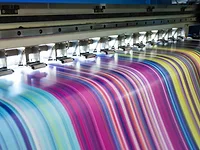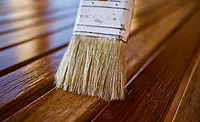Aqueous Pre-Dispersed Fumed Silica Enhances Waterborne Coatings

Fumed silica, in various grades and modifications, has been used for decades in coatings as thixotropes, anti-settling and anti-sag agents. However, due to the low viscosity of many water-based coatings, they serve as a poor grinding environment, making it difficult to achieve adequate dispersion and sufficient de-aggregation of the traditional powder technology. Without proper dispersion, efficacy is compromised and surface appearance properties suffer. Both of these concerns can be overcome by employing pre-made dispersions in water of fumed silica
Lab evaluations have demonstrated that multiple performance attributes can be enhanced by the use of fumed silica dispersions such as improvement of pigment, filler and matting agent suspension, reduced tack, improved dirt pick-up resistance, enhanced film strength, and even improved film formation of some resins, without compromising gloss and other appearance attributes.
Physical and Chemical Attributes
Due to its negative charge and acidic nature, standard fumed silica is somewhat limited in its use in waterborne coatings. In pre-dispersed form, fumed silica is available in both acidic and alkaline forms as well as with cationic modification, providing the formulator a much greater range of versatility. There are also several methods to modify the pH based on the needs of the formulator, such as ammonia, KOH and NaOH. Various grades of fumed silica dispersions are available with silica ranging in surface area from 90 to 300 m2/g with solid contents from 12%-40% silica. Also available are dispersions of titania, alumina and mixed oxides. These dispersions are made without solvent or surfactant. Therefore, they have no impact on VOCs and very little likelihood of causing incompatibility when added to a formula. This paper mainly focuses on the use of a 20% solids alkaline, aqueous dispersion, of a 200 m2/g fumed silica. In this paper, this dispersion is generically referred to as PD200/20.Finely Dispersed Aggregates
The optimum level of de-aggregation is achieved in the production of fumed silica dispersions to provide an aggregate size that will not significantly influence viscosity or negatively impact optical properties. Using standard dispersion methods, it would be extremely difficult to achieve this level of de-aggregation using standard powdered fumed silica in waterborne coatings. In most cases when attempting to disperse powdered fumed silica, aggregate size analysis shows a bi-modal distribution is produced with a peak of finely dispersed aggregates, and a second peak of much larger aggregated particles. These larger aggregates negatively affect gloss, haze and film clarity. The obstacle of trying to disperse powder is overcome by using pre-made dispersions of fumed silica. These dispersions are composed of extremely small aggregates with a d50 of approximately 100 nanometers, well below the optical range. Due to the very small aggregates in the pre-dispersed form, these products typically do not increase viscosity. Therefore, if viscosity build is desired, the standard, traditional powder form of fumed silica is suggested. The important technology advancement of the pre-dispersed fumed silicas is that they offer a wide range of other enhancements to waterborne coatings without affecting viscosity.
Primary Attributes
Aqueous Fumed Silica Dispersions as Anti-Settling AgentsAqueous fumed silica dispersions produce efficient results in eliminating hard settling of pigments and matting agents without significantly affecting the viscosity of the water-based coating. The finely dispersed silica aggregates help pigment, filler and matting agent particles stay dispersed, and keeps them from re-agglomerating and hard packing. Anti-settling behavior was tested in a highly pigmented semi-elastomeric masonry coating, as well as several satin clear wood varnishes, in both acrylic and PUD systems. In all cases, the experimental versions with the addition of the aqueous fumed silica dispersion showed clear improvements over the control samples. These results are demonstrated in the pictures in Figure 1.



Improved Film Formation
During another set of evaluations in clear latex resins, an interesting phenomenon was noticed. As expected, the fumed silica dispersion did not reduce gloss when added to these resins, but what was unexpected was the improved film formation, without co-solvents or coalescing aides. When 5% of the PD200/20 (1% silica solids) was added to several base resins, the resins formed a very good film. When the resins were drawn down without the PD200/20, the films did not form properly. This is commonly the case with many latex-based resins, which require some amount of co-solvent to assist in film formation. The mechanism underlying the improvement in film formation is currently under investigation. However the two theories held so far to explain this improvement are that (1) more organized particle packing occurs with the aggregates of fumed silica during the drying process of the latex and (2) the second theory being investigated is that the fumed silica aggregates help destabilization of the emulsion physically as the water evaporates from the drying film.


Secondary Attributes
Improved Sag Resistance with Aqueous Fumed Silica DispersionsAnother performance attribute positively affected by the PD200/20, independent from viscosity, is sag resistance and vertical stability. To address this behavior, investigations were done using a semi-elastomeric coating. In this system, sag resistance was improved from 30-35 mils in the control, to 40-45 mils in the experimental, using this dispersion at 1% silica solids (5% dispersion). Improved sag behavior is attributed to the interaction of finely dispersed silica aggregates with the pigment particles when the coating is applied to substrates and then subjected to vertical stress. This vertical stability is achieved once again without a major impact on viscosity. This is demonstrated in Figure 7.

Fumed silica, while not porous, has notable oil absorption, and when incorporated into highly filled systems helps to reduce the film tack. This is observed when incorporating both the powder and pre-dispersed forms. Due to its ability to absorb and function to fill in small spaces between larger filler and pigment particles, it also helps to make the final coating film less porous, increasing the dirt pick-up resistance. The reduction in dirt pick-up and film tack using pre-dispersed fumed silica can be observed in Figure 8.

PD200/20 was also tested and found to help prevent cracking in an exterior insulating finishing system. This coating was a mortar like heavily sand-filled coating. Bars of this coating were formed using a mold at 1/8th inch thickness for strength testing. Through the drying process it was observed that the control bars routinely cracked. With the addition of the PD200/20 at 1% silica solids by weight to the formula (5% dispersion), this cracking was no longer observed. The association of the silica aggregates, as introduced by the dispersion, with both the sand particles and the resin, produced an improvement in strength and cohesive forces eliminating the cracking. The reduction in cracking can be seen in Figure 9.
Conclusion
Aqueous fumed silica dispersions are a new form of a well-known, long-standing additive that can improve a variety of performance attributes in waterborne coatings. Its liquid, water-like form overcomes the challenges of using traditional powder versions of fumed silica.As an anti-settling agent, fumed silica dispersions prove to be efficient and demonstrate advantages of good flow and leveling, improved heat age stability, improved matting efficiency in matted systems, and improved König hardness, compared to other traditional technologies used in water-based coatings. Due to its solvent and surfactant free nature, it is easy-to-use and very versatile in a wide range of waterborne systems.
Aqueous fumed silica dispersions also provide the potential to lower VOCs by improving film formation and the possibility to reduce co-solvent with a number of acrylic resins. Along with these main benefits, further performance enhancements gained by using aqueous fumed silica dispersions in waterborne coatings are the other secondary attributes that can be expected. These include: improved sag resistance; reduced cracking in highly filled systems; improved film hardness; reduced dirt pick-up; and reduced film tack.
Fumed silica enjoys a long-standing tradition to improve a wide variety of coatings performance properties in many types of coating technologies. Now, new aqueous dispersions of fumed silica are an innovative and easy to use form, bringing high performance to waterborne coatings.
This paper was presented at The Waterborne Symposium, sponsored by The University of Southern Mississippi School of Polymers and High Performance Materials and the Southern Society for Coatings Technology, 2009, New Orleans, LA.
After the presentation at the Symposium, ongoing collaborative university investigations revealed that film formation improvements observed with predispersed forms of fumed silica are linked to reduced micro-cracking as latex coatings coalesce. New data suggests these positive effects relate to the minimum film formation temperature (MMFT) of the latex itself. For further information on this more recent information, please contact the manufacturer for more details.
Looking for a reprint of this article?
From high-res PDFs to custom plaques, order your copy today!





